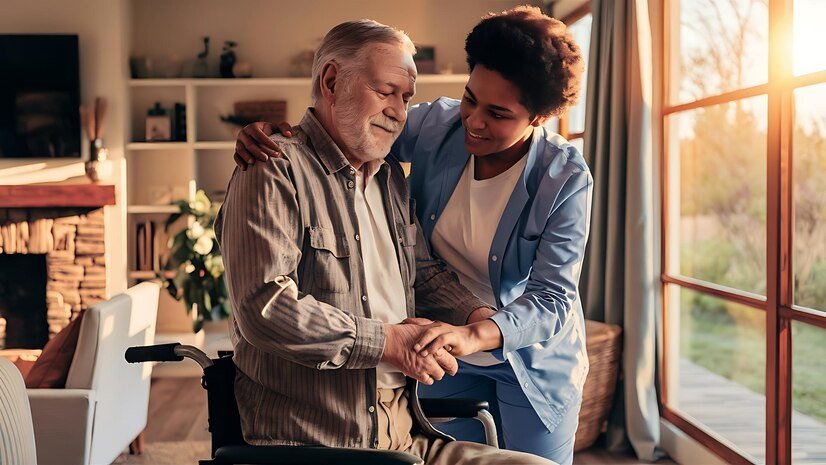As a caregiver, creating a safe and welcoming home environment is essential for the comfort and well-being of both the caregiver and the person being cared for. It requires a combination of practical safety measures and personal touches to create a space that is both functional and comforting. Here are some tips for creating a safe and welcoming home environment for caregivers.
Remove Trip Hazards
One of the most important safety measures you can take is to clear the home of any trip hazards. This can include loose rugs, cords, or clutter. Any item that could cause a person to trip should be removed, as falls can be especially dangerous for elderly or disabled individuals.
To create a safer environment, start by identifying areas of the home that may be hazardous. Look for items that are in the way, such as furniture or clutter, and clear them out of the way. You can also secure loose rugs with non-slip mats or double-sided tape. This will help prevent slipping or tripping on the rug.
Ensure Proper Lighting
Another key safety measure is to ensure that all areas of the home are well-lit. This will help prevent accidents and make it easier for the caregiver to perform their duties. It’s especially important to have good lighting in areas like hallways and staircases, where falls are more likely to occur.
To improve lighting, start by replacing any burnt-out light bulbs. You can also install additional lighting fixtures or use lamps to create a brighter atmosphere. If you have a senior or disabled loved one living with you, consider installing nightlights in hallways and bathrooms to make it easier for them to navigate in the dark.
Install Safety Features
In addition to removing trip hazards and improving lighting, it’s important to install safety features like handrails, grab bars, and non-slip mats in the bathroom and shower areas. This will provide stability and support for the person being cared for, as well as reduce the risk of falls.
To install safety features, start by identifying areas of the home that need additional support. In the bathroom, you can install grab bars near the toilet and shower to help the person being cared for maintain balance. You can also install non-slip mats in the shower and bathtub to reduce the risk of slipping.
Keep Important Items Accessible
As a caregiver, it’s important to keep important items like medications, emergency phone numbers, and medical equipment in a place that is easily accessible. This will save time and stress for the caregiver in the event of an emergency.
To keep important items accessible, consider creating a designated space for medical supplies and other necessary items. This can be a cabinet or shelf in a convenient location, such as the bathroom or kitchen. You can also keep emergency phone numbers and other important documents in a designated binder or folder.
Create a Comfortable Living Space
In addition to practical safety measures, it’s important to create a comfortable and welcoming living space for both the caregiver and the person being cared for. This can include adding comfortable seating, soft lighting, and personal touches like photos and artwork.
To create a more comfortable living space, start by identifying areas of the home that could use improvement. You can add comfortable seating, such as a recliner or armchair, to the living room or bedroom. You can also add soft lighting, such as table lamps or floor lamps, to create a cozy atmosphere. Finally, you can add personal touches like photos and artwork to make the space feel more like home.
Establish Clear Communication
One of the most important aspects of creating a safe and welcoming home environment for caregivers is to establish clear lines of communication between the caregiver and the person being cared for. This will help ensure that everyone’s needs are being met and that any issues can be addressed quickly.
Take care of the caregiver
Make sure that the caregiver is taking care of themselves as well. Encourage them to take breaks, eat well, and exercise regularly. Provide resources like support groups or respite care to help prevent burnout.
Conclusion
In conclusion, creating a safe and welcoming home environment for caregivers is essential for both the caregiver and the person being cared for. By following these tips, you can help ensure that everyone is comfortable, safe, and happy. Remember to prioritize communication and self-care to create a positive and supportive environment for everyone involved.




